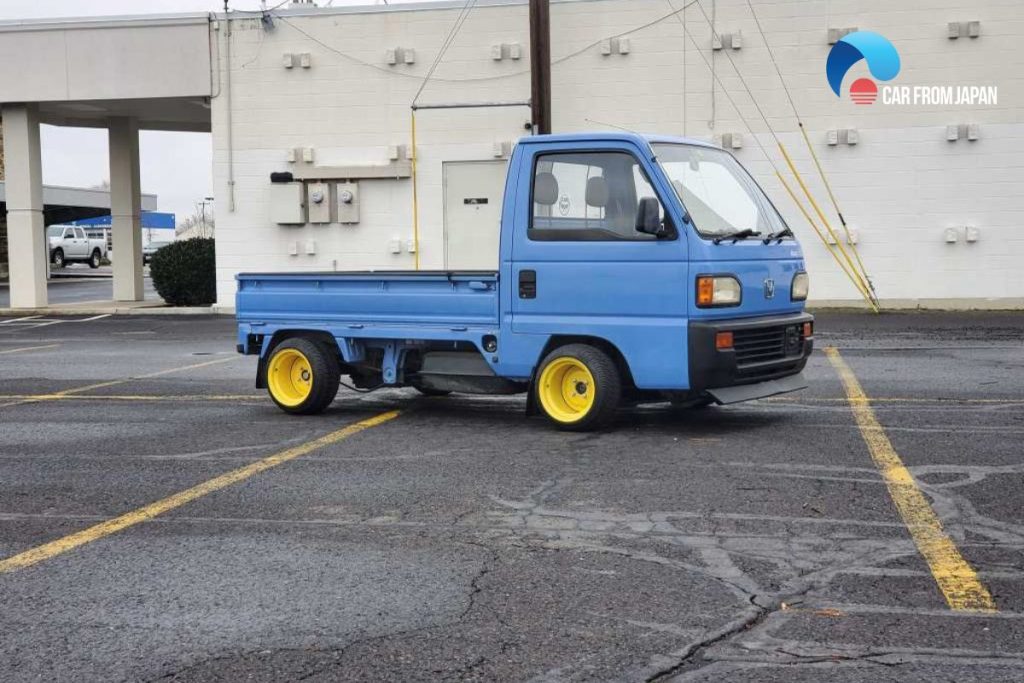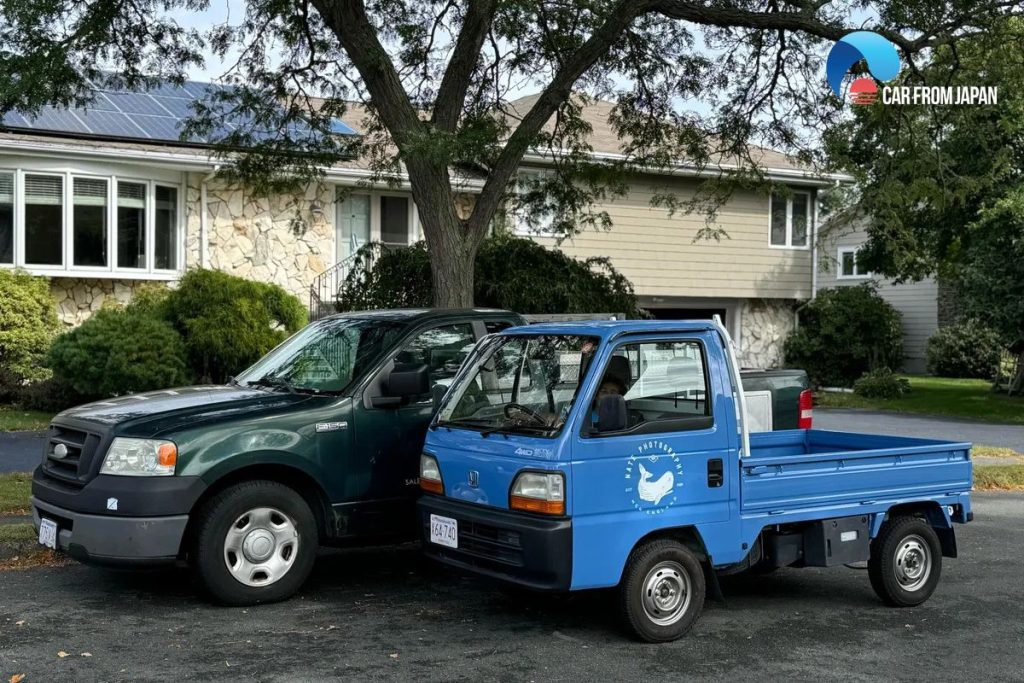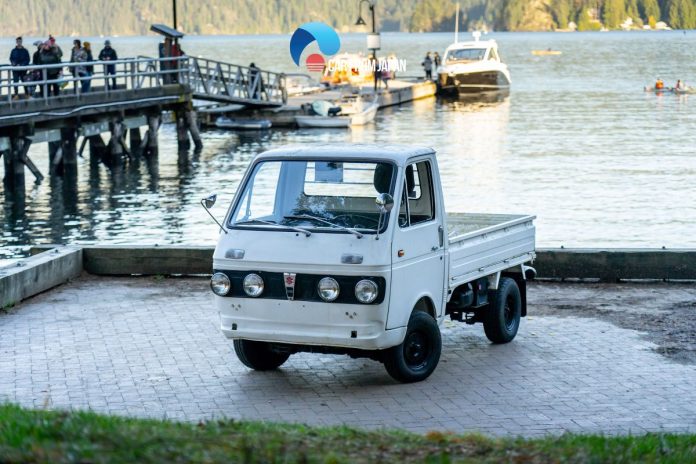Want to dig deeper into one of the biggest talks of the town in Oregon recently regarding the Kei truck and street legality? Follow along with Car From Japan for more details!
Contents
- The Proposal and The Oregon’s Roads Reality
- What Should You Know About The Japanese Kei Truck?
- The Argument for Legalization: Affordability and Practicality
- The Opposition To The Safety Standards of Kei Trucks
- Can We Find Middle Voices From Both Sides For The Proposal?
- The Kei Truck Legality Impact and Next Steps
- Final Words
The Proposal and The Oregon’s Roads Reality
Wandering through Oregon streets, you must be familiar with those bulky American trucks, occupying a large area on every path they pass by. You may also hear about Kei trucks, which look like car toys compared to regular trucks.
But within a month, these small vehicles have sparked a massive discussion. Making a legislative proposal in Salem, the Oregon State Senator, Sen. Anthony Broadman (D-Bend), sneak-peek a bill to make Kei trucks legal to drive on public roads.
For years, the authority has considered these mini-trucks not built for US vehicle standards and refused to give them proper license plates. This act may put pressure on the Oregon DMV (Department of Motor Vehicles) to change its regulation forever.
The question here is why all of a sudden? Why are people pushing for this? The reason can be partly money and higher demands.
Since Kei truck is somewhat of a small-job-perfect-match, new regular big trucks may cost an excessive number for a decent driver, along with price tags and poor gas mileage.
However, despite growing concerns and interest in the Kei truck oregon, safety is an impossible-to-ignore issue. As they were originally made for narrow Japanese streets, not crowded US highways, the lack of modern safety features is predictable (airbags or strong steel frames).
This leaves Oregon with a tough choice between giving people an affordable transportation option or making sure everyone on the road is as safe as possible. Which side are you on?
What Should You Know About The Japanese Kei Truck?
Before digging deeper into the proposal, what is a Kei truck? This Japanese term highlights the light and small features of a truck type produced in Japan whose origin name is Kei-jin-dosha.
With what you can casually imagine about a truck, these trucks are small and affordable and follow strict Japanese rules about size and engine.
The mentioned Kei engines are less than 660cc, even smaller than some motorcycles. Everything is designed for simple and practical use, not for car speed or comfort.
If Kei trucks are unable to meet the US vehicle safety standards, how are they even allowed in the United States?
It’s because of the 25-Year Rule: any vehicle older than 25 years can be legally imported to the USA without meeting modern safety and emissions requirements.
You may often see these Kei on large farms, construction sites, or nurseries, carrying around stuff and goods. However, the vehicles are only used off-road or within a property, not on main Oregon roads.
Yes, you can import and use them in specific places, but your vehicle will not own any issued license plates. The argument is simple: these trucks were never meant for American roads with their safety and design standards.
The new bill aims to reform the conflict where a vehicle is legal to own but not to use on public roads.

The Argument for Legalization: Affordability and Practicality
As the cost of modern trucks slowly becomes hard to bear, many people show support for the Kei legal pathway and State Senator Broadman.
Oftentimes, new full-sized conventional trucks can cost $50,000 or more, a skyrocketing price tag that is hard for working families or small business owners to access. And it is when an affordable Kei truck comes to the rescue.
Alongside its price tag (most under $8,000), the Kei vehicle is the right tool for many jobs. Supporters range from small farmers, landscapers, or anyone doing local errands, knowing that a Kei truck will offer utility without waste and optimized practicality.
Many also claim these little trucks are fuel-efficient and environment-centric. A 40 to 50 miles per gallon can save a significant amount of money in one year and create less pollution.
The Opposition To The Safety Standards of Kei Trucks
Despite all the good deeds mentioned above, there is a simple yet powerful argument against them and the proposal: safety.
Several opponents describe these vehicles in bad terms, such as death traps or irresponsible driving behaviors. Accordingly, the conversation about affordability or practicality also ends here, where a serious, life-altering accident may occur.
Weighing less than 2000 pounds and lacking basic safety features like airbags, anti-lock brakes (ABS), or modern crumple zones, the 25-year-old trucks face some undeniable backlashes for safety concerns.
Furthermore, many worry that Kei trucks are too slow on some Oregon rural highways with a speed limit of 55 mph, or the right-hand drive may cause troublesome driving experiences.
Also, there are big questions about insurance. Would any companies be willing to cover them, and if so, how much would it be?

Can We Find Middle Voices From Both Sides For The Proposal?
The argument on the surface can be significant. However, if you look closer, many people are not on the end.
Many Oregonians believe there will be a way to get the benefits of these little trucks while still managing the risks. Eventually, it’s not about choosing a side but about finding a compromise that works for and satisfies everyone.
A popular solution is allowing the legalization of Kei truck Oregon on the road but restricting them to lower-speed roads (45 mph), banning them from highway interstates, or they would have to display a speed limit sticker to inform other drivers.
It is what they call the legalize-but-restrict compromise. But what are the next steps after all of these noises and conversations?
The Kei Truck Legality Impact and Next Steps
If this law passes, it would create new opportunities for many Oregonians. Small businesses, vehicle importing, or mechanic jobs can thrive more.
As the Senator’s proposal makes its way through the Oregon Legislature, it will go to a group of lawmakers for discussion. If possible, officials, DMV experts, and even citizens can all share their thoughts in potential public meetings.
Final Words
In the end, the fights over the legality of the Kei trucks on the streets can all come down to core questions: Can the practical and affordable benefits of these trucks outweigh their safety concerns? And what would Oregon value most for the future of transportation for all citizens?
Which line will they draw with the answer? We hope for the best act for all Oregonians!
For more insightful Car Talk, follow Car From Japan today!



